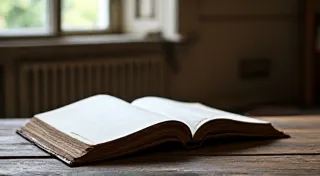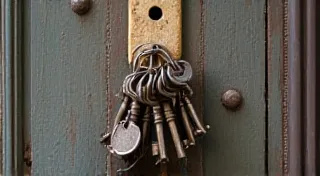From Rust to Resonance: Reawakening a Dormant Voice Through Pen Restoration
There’s a quiet beauty in things left behind. A melancholic charm clings to antique furniture, forgotten photographs, and instruments silenced by time. And for me, that beauty is most profoundly felt in vintage pens – particularly fountain pens. They’re more than just writing tools; they're tangible links to the past, vessels that once held the thoughts and words of others, now waiting for someone to breathe life back into them.
I remember finding my first restoration project, a Parker 51, at a flea market. It was buried under a pile of old tools and chipped porcelain dolls. The barrel was cracked, the cap was tarnished beyond recognition, and the sac, the rubber bladder that holds the ink, was hardened and brittle. Honestly, it looked hopeless. But something in its worn elegance, the way the faint ghost of its original luster peeked through the grime, called to me. I saw not a broken object, but a story waiting to be told.
The parallels, I realized, were striking. Like a writer staring at a blank page, struggling to find the words, that pen felt silent, dormant. We all experience periods of creative stagnation, moments where the flow is blocked, and our inner voice feels muted. Restoring this pen, I hoped, might offer a different perspective, a reminder that even the most deeply buried potential can be resurrected.
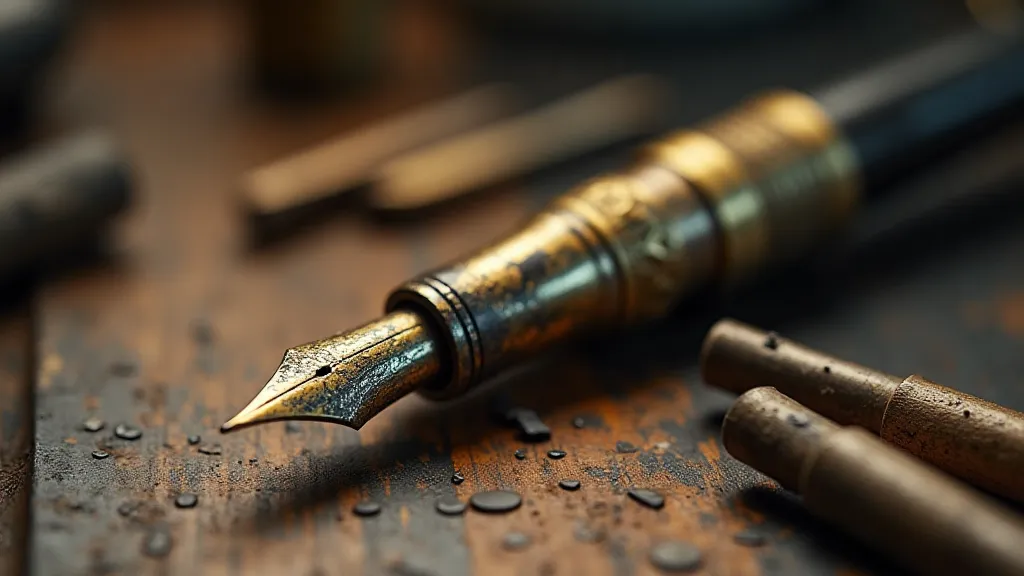
A History Etched in Metal and Nib
Fountain pens, as we know them, have a rich history. While rudimentary forms existed before, the mass production of reliable fountain pens began in the late 19th and early 20th centuries, coinciding with a surge in literacy and a burgeoning middle class eager to express themselves through writing. Names like Waterman, Parker, Sheaffer, and Wahl-Evans became synonymous with quality and innovation, and their pens were prized possessions, often passed down through generations.
Think of the letters sent across continents, the business deals signed with a flourish, the poems penned with heartfelt emotion - all facilitated by these elegant instruments. They were symbols of sophistication, craftsmanship, and the power of the written word. The very metal of the pen, often crafted from precious materials like gold or sterling silver, whispers tales of a different era, a time when manufacturing was a craft and attention to detail was paramount. Observing the intricate engravings, the perfectly balanced weight, the subtle curve of the nib – these are testaments to the artistry of their creators.
The Resurrection Process: Patience and Precision
Restoring a vintage pen is rarely a quick or easy process. It’s a delicate dance between patience and precision, requiring a combination of specialized tools, knowledge, and a healthy dose of intuition. The initial cleaning alone can be a challenge. Years of dried ink, accumulated grime, and hardened deposits must be carefully removed without damaging the pen’s delicate components.
The sac is often the biggest hurdle. Decades of exposure to ink and air can render it brittle and inflexible. Replacement is often necessary, requiring a skilled hand to install the new sac properly, ensuring a reliable ink flow. Nibs, too, can be damaged – bent, cracked, or corroded. Straightening a nib is a true art, requiring a steady hand and a keen understanding of the nib’s geometry. Even the smallest deviation can drastically affect the writing experience.
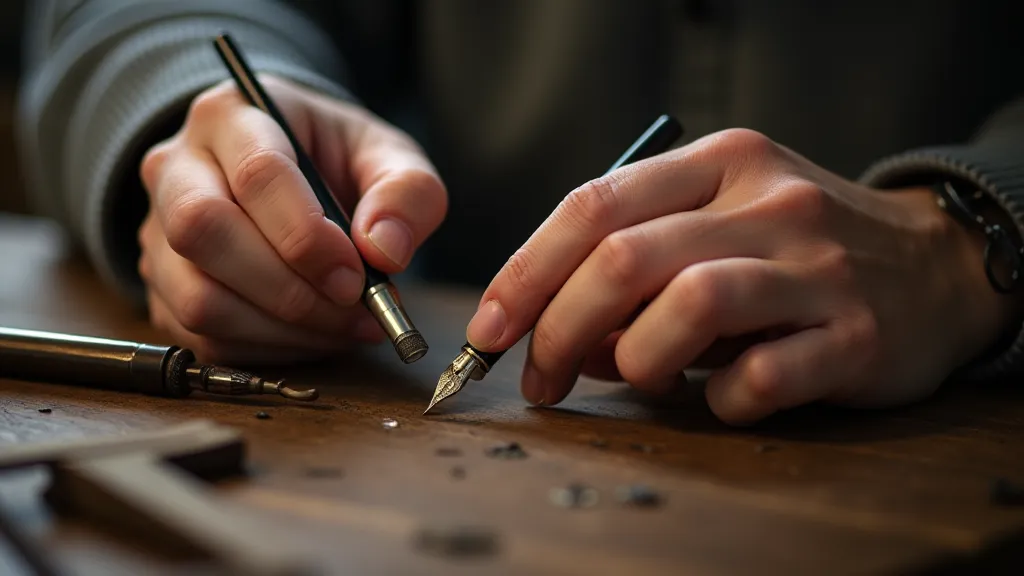
Each pen presents unique challenges. There’s no one-size-fits-all approach. It’s a process of observation, diagnosis, and careful experimentation. Sometimes, a simple cleaning and lubrication are all that's needed. Other times, more extensive repairs are required, involving disassembly, component replacement, and meticulous reassembly.
More Than Just a Pen: A Metaphor for Creative Renewal
As I meticulously restored that first Parker 51, I found myself drawing parallels to the creative process itself. That initial feeling of being overwhelmed, the sense of hopelessness when faced with a seemingly insurmountable problem – it’s the same feeling a writer experiences when staring at a blank page. The process of cleaning away the layers of grime and decay mirrored the act of clearing away mental clutter and self-doubt. The careful attention to detail and the painstaking effort required to repair each component reflected the dedication and perseverance needed to bring a creative project to fruition.
The act of breathing new life into the pen – filling it with ink and watching it write smoothly across the page – was profoundly satisfying. It wasn’t just a pen that had been restored; it was a sense of possibility, a reminder that even seemingly broken things can be beautiful and functional again. Just as a blocked writer can often find their voice again through a change in perspective or a renewed focus, the restored pen offered a different way of seeing the world, a reminder that creativity can be rekindled even after periods of dormancy.
The smooth glide of the nib across the paper, the subtle scratching sound, the rich flow of ink – these are sensory experiences that connect us to the past, to the human desire to communicate and create. The pen, once silent, now speaks again, carrying its own history and adding to the ongoing narrative of human expression.
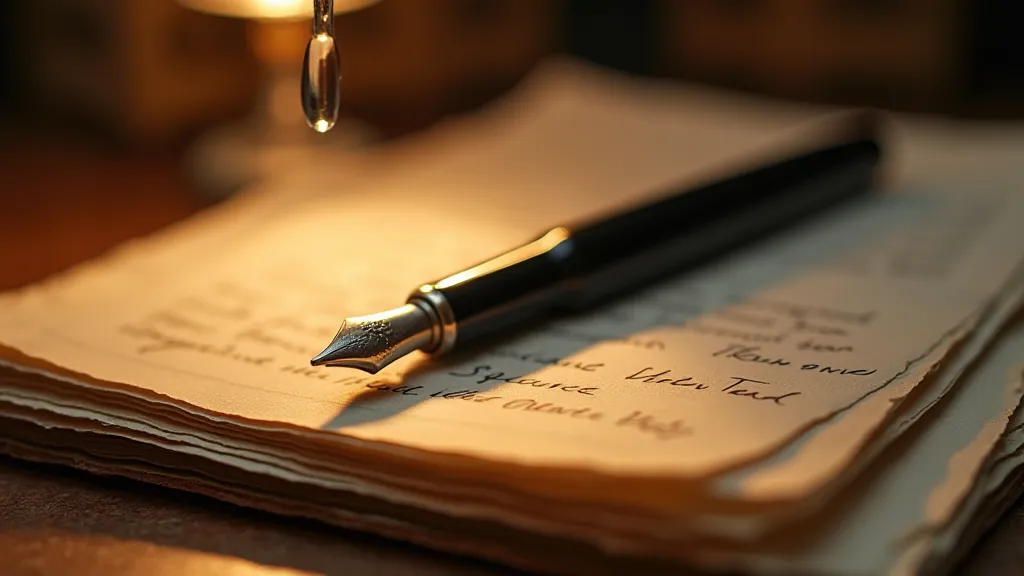
Collecting: A Journey of Discovery and Appreciation
For those drawn to the allure of vintage pens, collecting can be a rewarding journey of discovery. It's more than just acquiring objects; it's about immersing oneself in history, understanding craftsmanship, and appreciating the evolution of design. Each pen tells a story, and the collector becomes the curator, preserving these tangible links to the past. It is a way of honoring the artisans who created them and the individuals who used them.
Whether you's a seasoned collector or just starting out, there’s always something new to learn and discover. The world of vintage pens is vast and fascinating, filled with countless variations, rare models, and intriguing stories. The true value, however, lies not in the monetary worth of the pen itself, but in the connection it provides to a bygone era and the joy it brings to those who appreciate its beauty and craftsmanship. And occasionally, a neglected pen finds its way into your hands, waiting to be revived, and ready to share its story once again.

